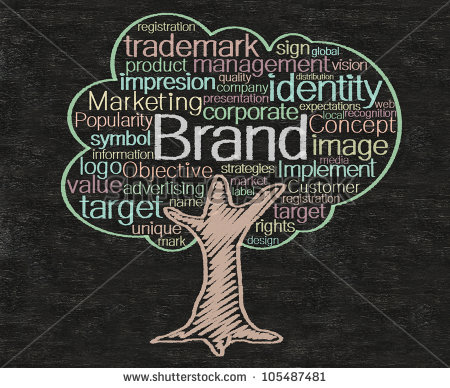It’s a commonly held belief that actual transaction conversion takes place at the very end of the buyer’s journey. This approach uses old school pitches, usually incorporated into a multimedia vertical blast aimed at bottom funnel travelers. It is also known that the “online buying” part of the journey represents a very small percentage of the total time spent on “the shopping.” That’s especially true when compared to the awareness, consideration, and affirmation or upper parts of the funnel. So one might ask, why wouldn’t someone with a message that asks the consumer to consider our product or service on qualitative points take advantage of those upper funnel opportunities? Why wouldn’t someone seize the moment to brand to a much larger group of, but still targeted, potential consumers? The answer is that attribution is complicated and few have the patience or expertise. However, branding as a full funnel endeavor, with a goal of nurturing or pre-selling, opens up countless opportunities to differentiate. So, in this writer’s judgement, it is quite a worthwhile effort. The alternative is to inhabit very crowded waters, along with equally aggressive competitors, all selling the same way. I would suggest that relying primarily on this universally practiced, vertical campaign is highly inefficient on a cost per transaction basis.
Another way to look at marketing communications is to consider the total customer life-cycle as an ongoing opportunity to connect, educate, motivate, and yes, sell. It’s a way to begin conversations and even relationships based not only direct interest in our product, service, or company, but also to use a shared second interest to get to know them better. This can occur in a less crowded, less competitive, and less confrontational part of their journey. Often, short term brand expansion in digital space is held to a quantitative measurement and direct attribution to sales growth on a timeline. Many marketing department’s anticipated sales are based on an educated guess or wishful thinking over informed analysis of market breath and receptiveness.
Even before the lower funnel goal can be considered and an expanded brand initiative can begin, we need a baseline of understanding who we are talking to and how best to do it. We also need research into what we are as a brand, what we’d like to become, and what (if anything) has to change to realistically get there. In my previous post, I spoke of the “why” as identification of core values through self-examination. This has to happen before we go to market. We should also consider the implications of not doing it. Social platforms are a great place to start to discover what the market thinks of you, good and bad. Most folks in the “C” suite, however, pass over this truth because it is abstract and complex. But content creation born of surveying, content engagement analytics, and plain old person to person interactions is informative. Additionally, competitive analysis is also being overlooked to a large extent because of the marketing community’s overconfidence and desire for something simple to sell their clients, resulting in too much bottom funnel feeding.
There is no beginning, no end to the journey, just a process of placing signposts along the way.
A well-known motivational speaker and author of the 80’s and 90’s, Zig Ziegler was quoted as saying “you don’t have to be great to start, but you have to start to be great.” With full funnel branding requiring more preparation, monitoring, and contextual content creation all along the way, a more holistic approach is in order. If you’ve done your homework and know your customer, your competitor, and something about what drives consumer consumption, then it’s time to dive in and engage. Talking to your audience early and often always has a benefit greater than analytics can show. It helps you look at what you’re doing organizationally from their prospective. It promotes understanding more, while assuming less.
Once you’ve embraced full funnel marketing as an ideal way to build brand communication and expansion, you are ready to start “mapping” the journey and beginning to define the moments when your new acquaintances are more receptive. The better we start, the more relevant analytics become to your bottom line, and after a few cycles, they’re just as rewarding.
Customer Lifecycle Mapping is simply another way to describe the mechanics of full funnel marketing. It considers and addresses a consumer’s state of mind and emotional tendencies as they relate to our product or our organization contextually. Equally important and concurrent with mapping is Customer Experience Management. Managing the mechanics and what we learn along the way helps us maintain brand integrity and customer generated content. In other words, are we doing what we say? From an organizational standpoint, most customer experience management is relegated to vertical tasking, whereas customer experience is not integrated into ongoing brand development, but rather aggregated purely for “C suite” analysis. This kind of feedback is often function based and doesn’t employ the vision needed or produce the desired result needed to make impactful decisions. That’s too bad, because here is where insight suggests improvements in the organization and the brand that endure.
According to Forrester Research, “customer experience doesn’t drive behavior, customer loyalty does.” Creating or earning loyalty, a key component in longer term relationship building is based on trust, confidence and continuous affirmation of both. If you can do this on an emotional level, you will build a brand that can resonate through the entire funnel and carry over to the next one. To quote well-known poet Maya Angelou; “I learned people will forget what you said, and what you did, but never how you made them feel.” Considering and creating content for how someone should feel about your brand before, during, and over the product life-cycle will always trump the last minute hard sell. Getting people to feel something about a brand is a longer journey, and requires choosing the road less traveled. Full funnel is where marketing innovation will take place.







